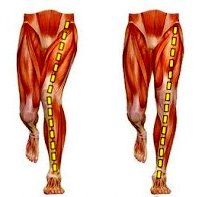Medial Knee Pain and Runners
Knee pain and running are commonly associated with each other, leading to various negative consequences. Runners usually resort to temporary treatments, such as resting, to alleviate their symptoms, but these methods do not address the root cause of the problem. If the underlying issue remains untreated, the runner may become frustrated and quit the activity altogether, affecting their quality of life, happiness, and physical health. This blog aims to provide insight into the common causes of knee pain in runners and offer proactive solutions. Poor distance management, lack of single-leg stability, and running patterns are among the leading factors that cause knee pain in runners.
Distance management is critical when preparing for long-distance races. Just as it is essential to build up your cardiovascular endurance, building up your orthopedic endurance is equally important. Running too much, too soon, without proper recovery, can lead to chronic pain. It is best to start a training program with lower mileage and work up to the desired goal. There are several free training programs online, or you could consult a performance-based physical therapist or trainer to design a personalized training program. If you are experiencing knee pain with running, consider tracking your mileage.
Valgus Collapse: often due to lack of hip stability
Lack of single-leg stability can cause knee pain, often due to instability in the hip or the knee joint. This instability leads to "valgus collapse," commonly known as "knock-kneed." This condition can result in excessive medial knee forces, leading to insidious knee pain. If the source of instability is in the knee joint, it can result in tendonitis. Performing single-leg stability exercises targeted at the hips and knees can help improve running form and lower extremity resilience. Common single leg exercises are the Bulgarian split squat or the single leg Romanian deadlift. It is essential to have a professional diagnose the source of instability.
Example of Bulgarian Split Squat
Example of Single Leg Romanian Deadlift
Modifying your running pattern can also help reduce unwanted forces on your knee joints. However, making these modifications requires a proper running analysis. The beneficial modifications that work for one individual may not work for another. Therefore, it is critical to have a professional analyze your running pattern and create a customized gait modification plan for you. That being said, one modification that has proven to be beneficial for knee pain is introducing an increased running cadence. Will's study shows that increasing cadence by 10% can significantly improve patellar femoral knee pain (1). To achieve this, match your steps on a treadmill to a metronome, determine your beats per minute, and multiply this by 1.1. Then, attempt to match your steps to the updated beat per minute. Small changes, such as changing cadence and steps per minute, have powerful positive effects on knee pain.
These are just a few of the causes and treatments for knee pain in runners. If you experience difficulty training or progressing due to knee pain, consider a free phone consultation with the doctors at The PATH Rehab & Performance. Here, we can discuss your symptoms, goals, and address any questions or concerns you may have. We can help you achieve your fitness and athletic goals while getting rid of knee pain. Don't hesitate to ask for help!
Reference:
1) Willy, R. W., Scholz, J. P., & Davis, I. S. (2011). Mirror gait retraining for the treatment of patellofemoral pain in female runners. Journal of Orthopaedic & Sports Physical Therapy, 41(3), 169-174. doi: 10.2519/jospt.2011.3505
Dr. Cody Benavides
Co-owner
PT, DPT, TPIcert



